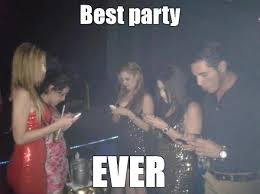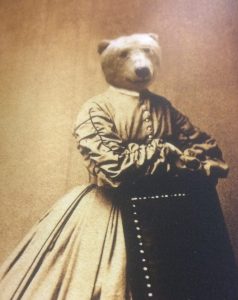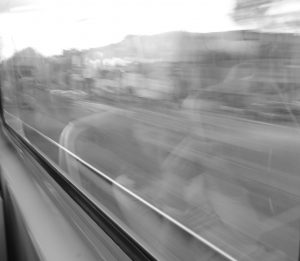1. ‘INTRO TO PHOTOMEDIATIONS’
‘To live is to be photographed, to have a record of one’s life, and therefore to go on with one’s life oblivious, or claiming to be oblivious, to the camera’s nonstop attentions.’
Susan Sontag (2004) in Photomediations: An Introduction by Jonna Zylinksa, htpp://photomediationsopenbook.net.
One of the most interesting aspects in the Uses of Photography Course is the way people behave in front and behind the camera.
As Sontag states that we regularly document our lives. From birth, our parents take snapshots of us growing up, documenting our evolution into family photo albums, a visual history of who we once were, an undeniable memory. In turn, we become the photographer, and now, especially with smartphones, we can capture ‘incessant fleeting moments’ (Sontag) then distribute and post on our social media timelines for that insatiable animal called ‘acknowledgement’. Like the tree falling in a forest, ‘If it wasn’t photographed then it didn’t happen.’ We have become, in a way, been conditioned to crave for a sense of legitimacy and as technology continues to develop we will feel increasingly compelled to record everything and consume it. This is not so far from the truth. Digital recording lens are soon to become a reality and we will be all able to replay and watch the day’s events or indeed share it (see the speculative fiction TV series, Black Mirror).
This leads me into the issues of consent. While we are already being ‘captured’ by CCTV, satellites, surveillance and drone cameras or other people what then when we don’t see the camera at all? Because when we see someone with a camera we can request that our pictures not to be taken but if the camera is hidden in an eyeball, then what?
As we experienced in ‘Asking for Permission’ prac, people do behave differently in front of a camera and we lose the ‘freshness’ of the moment when we make them aware of the camera. Today, people are far too aware of the potential of their image and the loss of control over it. As Victor Burgin points out that it is not camera technology that has revolutionised photography but rather the broadband connection to the Internet. The photo is no longer a single image on photographic paper. It is now data to be shared with billions of others across the world.
However, while everyone now is a ‘photographer, distributor, archivist and curator’ (Joanna Zylinksa) there does remain an orthodoxy of what a ‘proper photographer’ is. Art establishments decide what is art photography and I wonder whether their rubric is still located in the pre-digital world of Henri Cartier-Bresson or Richard Avedon who were using the less ubiquitous form of analogue film. Of course, even today one can see the brilliance of these artists (the composition, the lighting, the subject choices) but I think the ubiquity of photographic images has in a way (though not absolutely of course) eroded the uniqueness of ‘the photograph’ that we are constantly trying to put head above the flood of ‘data’ that is constantly being shared.
Still, all said and done, we know a brilliant photograph when we see one whether it is taken by a professional or indeed amateurs and if anything new technology will perhaps make us better visual communicators.
2 . THE PHOTOBOOKS
[Of movies] ‘It must have a beginning, middle, and end but not necessarily in that order’. Jean-Luc Godard. Gerry Badger, ‘Reading’ the Photobook www.aperture.org/pbr
What I found most appealing about the photobook is that it didn’t have to be primarily narrative focused. This is especially useful for foreign readers who start from the beginning of a book. The form is open to the author/photographer to determine. As John Gossage, the great American bookmaker said, ‘It doesn’t matter, you can do absolutely what you want. It’s all fiction anyway.’
Which is true in my case. For my compendium, I detailed that my neighbour is fond of cutting and hacking at my trees. This is true. However, what I photographed for the photobook was a reconstruction. I cut the branches and left them on the ground! And for obvious reasons. My neighbour’s infraction occurred many months ago.
Gerry Badger’s reading was also liberating because while the photographs are important, they are not the be all and end all. As he states here:
‘It’s how the basic building blocks are put together that makes for success. You can have great photographs in a weak photobook. And quite ordinary photographs can be the basis of an important photobook’.
This was especially true of my project. My neighbourhood isn’t aesthetically speaking, particularly interesting or ‘photographable’. I was stuck with flat straight lines of the Melbourne suburbs. Difficult to make interesting. Thus, I borrowed a fish-eyed lens and a lens with a long focal length and overall of better quality. It made a huge difference. The fish-eyed lens took away the flatness of the houses but also helped show what was in the neighbour’s front yards and suggested with the natural vignette at the edges of the lens that I was spying on them.

So while my photos don’t stand out as being remarkable, putting it in a photobook did. While I understand I didn’t have to use a narrative I chose to in this case. It appears this is how my mind works. There’s always a narrative going on there! Having that kind of structure helped me choose what photos to use (I had over 500!) and what to throw out. It had to fit within the theme (absence, loss – suggested by Daniel Binns) and the story itself.
3. Reflection on how your media practice has been influenced and/or changed by ideas, exercises and/or experiences in this studio
Having had no DSLR photography experience the Uses of Photography subject was very useful in giving me a grounding in basic photographic skills. I had used cameras before – compact cameras and when travelling so composition wasn’t so much of an issue. But using settings like exposure, aperture, shutter speed and different lenses was all new for me.
One the most favourite aspects of the course were the documentaries on Vivian Maier and Sebastião Salgado. Maier managed to capture spontaneous ‘without permission’ moments in cities while Salgado was able to make works of art on the human condition across the globe. I’m more drawn to Salgado because of travel and my own experience of being in those countries and travel photography in general.
The other aspect of my process as a photographer was working in the studios. I was lucky enough to have some great students on my table like Taylor and Chynnae who were always and helpful for someone like myself with less experience. I especially liked the ‘Stranger and Stories Project’ where I got to meet Miguel Meirelles, the antique furniture restorer, as not only did I get some great shots but we had very interesting conversations.
Doing the prac activities outside were good to familiarise myself with the camera form. Even simple things like portrait shots with the light illuminated from behind or in front helped construct more interesting shots.
Furthermore, the portrait shots of strangers, street photography were fun because I got engage with people (not one person said no) and got at least one good shot from the exercise (The Chess King). I think what is valuable here with Uses in Photography is playing. Playing and experimenting with different angles, compositions, lighting, exposures and focal length.
I found this very much with the Projects. The first project where I tried to emulate Steve Curry was reasonably successfully though felt short of the exoticness of his travel photographs. I did however, start to see what makes a good photograph, what attracts the eye and what doesn’t.
I think looking at lots of photographic books like I did at the RMIT library helped to form a better understanding of photography. I don’t think I’ve found my style yet but with perseverance, it shall come. Of course, going out and doing it also put me on a huge learning curve (along with software programs such as Lightroom and Photoshop). Of all the subjects I have done I would say this has been the most enjoyable and the most labour intensive.
In a nutshell here is what I’ve learnt:
- Photographers like Henri Cartier-Bresson, Sebastiao Salgado and Vivian Maier
- Familiarity with a DSLR (I’ve had no prior experience) and general competence
- Prac exercises using light from behind and in front, portraits, street photography
- Asking permission and the question of ethics
- Framing and composition of the subject, including edge framing which I found interesting.
- Capturing the essence of someone in a moment
- I need to get closer to the frame of my subject – the social actors.
- Using better quality lenses – dramatic difference
4. Reflection on Photobook presentation in Week 10
This week we had to pitch our Project 4 ideas to the class and receive valuable feedback from Media lecturer Dan Binns and Program Manager of the BA Photography Program, Pauline Anastasiou.
It was great to see other students’ work as this help stimulate or add grist to the mill for our own projects. I particularly liked Hannah’s presentation on ‘bedrooms’ and whether to have the owner of said room present or not. Pauline followed up with reference to Ashley Gilbertson and his photographs of soldiers killed in Iraq and Afghanistan (http://www.ashleygilbertson.com/bedrooms-of-the-fallen/).
Diyy had some interesting double exposure images which were quite colourful and interesting and Daniel suggested she could use monochrome sepia as well as colour.
Other photographers to take note of are Patrick Clair (does title sequence) and Elliott Erwitt who photographs dogs that look like their owners.
My presentation
I didn’t have the requisite 3 slides…I had 10! I needed to do that so that Daniel and Pauline would get some kind of idea of where I was heading.


Pitch 1 – Love of Distraction

I’m curious how we’ve all accepted this kind of behaviour as normal – staring at a 5 by 4 inch rectangle – the ubiquitous smartphone. We’re on it all the time, constantly checking it, walking with it, driving with it, eating with it, going on dates with it and yes, going to the toilet with it.


I wanted to look at the absurdity of such a thing and either change the object completely to something so off the wall (like a subject staring at a live squid rather than a phone) or have the phone removed completely. Like this shot here:
 Or there’s an opportunity to be self-reflexive with it and play with the form and media itself:
Or there’s an opportunity to be self-reflexive with it and play with the form and media itself:

TEST SHOT – My daughter on the train:
Pitch 2 – In the absence of Neighbours

This is my house. I’ve lived here for five years. In this time, my neighbour, Nick a sixty-something Greek man, has for some reason always put his bin on our nature strip. I’m not sure why. He has ample space on his princely lawn that he keeps short and manicured.
He also reaches over and cuts the branches on my tree. The tree is not overhanging his property at all. Nick simply hates leaves! Anyway, I asked Nic to not reach over and cut the branches on my tree and dump them. This seemed like a reasonable thing considering that we have got along so well for some time (what I mean of ‘so well’ I mean we say hello to each and sometimes chat briefly). But no. Nic was having none of it and he cracked the shits and hasn’t spoken to me since. Interestingly, he hasn’t put his bins on our side for some while and I sometimes think that if I grab his bins on bin night and put them on our nature strip then somehow, metaphysically, solve his disquiet.
In any case, I woke one morning to find this:
Nic had only mown the bit on the lawn that offends him the most. I don’t cut the lawn often because I just don’t care. I am the worst neighbour!
I thought I could take this further by taking a group portrait of my other neighbours in the street standing in front of their houses.
But then, when we get to Nic’s place, they’ll be no family portrait. Just a mysterious absence.
Daniel and Pauline suggested I focus on this idea of boundaries, presence and absence, that I could even chalk out on the pavement of where my house begins and ends.
Neighbours. Thank God for fences.






